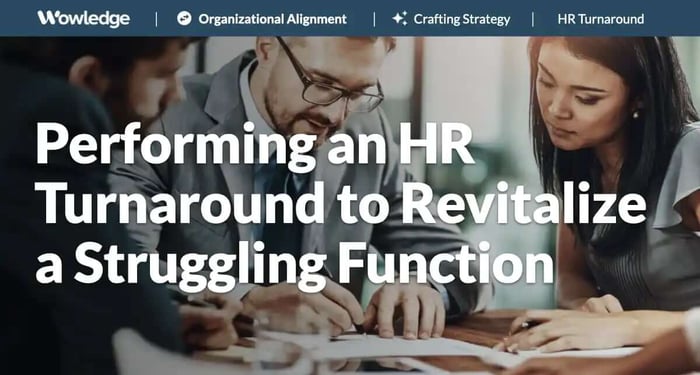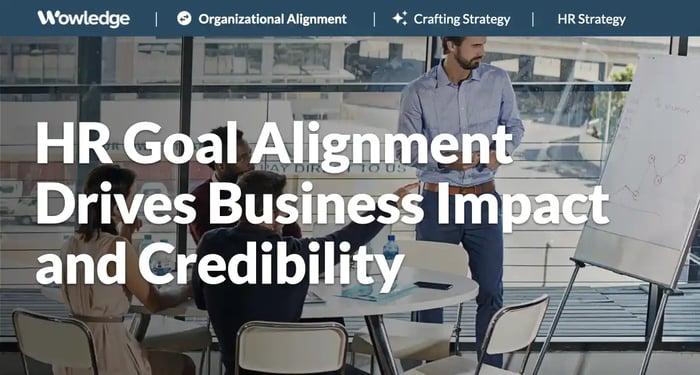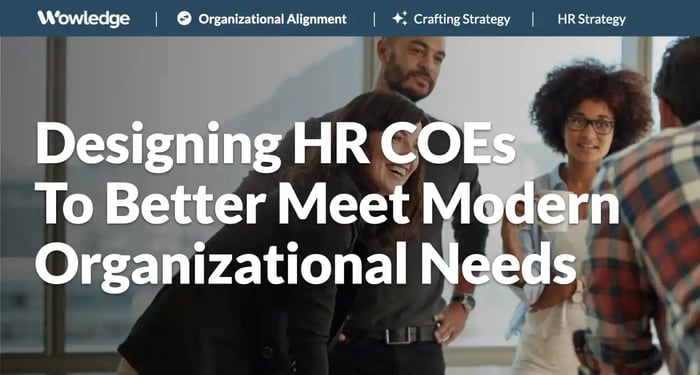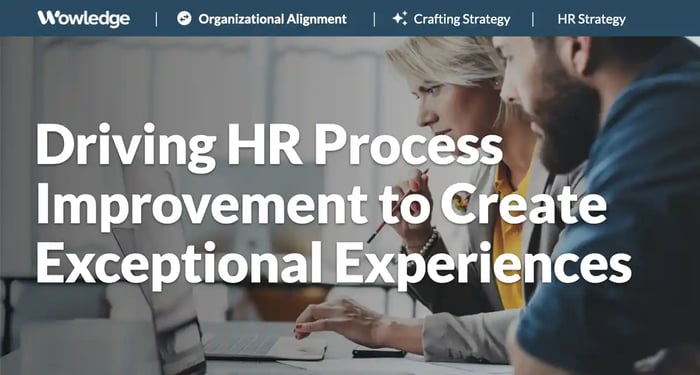Table of Contents
Taking on the leadership of a poorly performing HR function is a real challenge. Consider that for some old-school leaders and managers, the structuring and functioning of such a department might be consistent with their expectations. Meanwhile, forward-thinking, modern leaders will immediately recognize the significant shortcomings and unfulfilled impact. The issue is essentially the same for any enterprise-wide function, be it finance, operations, legal, or marketing, as the imbalance in expected contributions damages the achievement of an organization’s goals and aspirations. The difference, however, is that HR activities touch and affect every employee daily. Rescuing and reinvigorating the function by planning and performing an HR turnaround is a highly visible and impactful undertaking.
The impact of HR on the business is substantial and has been widely demonstrated to affect profitability, productivity, customer satisfaction, sales, and market performance. HR strategies, processes, practices, and initiatives related to employee engagement, talent development and allocation, employee experience, culture, and leadership effectiveness have been proven differentiators for business outcomes.
Therefore, the lack of quality and alignment is a troubling and challenging issue that requires a turnaround. The HR turnaround is considered a drastic step, separate and distinct from an HR transformation, process improvement, or reorganization driven by the need for subtle or targeted enhancements. It involves a comprehensive review and upgrading of the overall function, including its strategies, priorities, staffing (people, roles, deployment), structure, and operating or delivery models.
Much like a corporate turnaround, an HR turnaround involves an organization that cannot operate and achieve minimally acceptable operational, financial, and market goals as it currently exists. In an HR turnaround, a major remaking of the function is required, and everything from the organization structure, priorities, and strategies to people and processes is involved.
Recognizing when an HR turnaround is necessary
Leadership perceptions
The function's need for a total or significant overhaul is rarely seen or understood by its existing leadership. As with most human endeavors, performance and contribution are often on the “eye of the beholder,” and social psychology’s attribution theory suggests that humans perceive and interpret the causes of failures or shortcomings as occurring due to external circumstances. In other words, they are “not something that I did or could control.” As a result, people tend to have rosier assessments of their work, performance levels, and contributions.
However, leadership views of HR effectiveness and contributions tend to lag behind those of HR leaders. A long-standing study from Cornell University enumerates significant differences in perceptions of HR effectiveness, with business leaders rating HR significantly lower than HR leaders in the effectiveness of HR’s:
- Providing services (-17% lower)
- Change consulting (-32% lower)
- Business partnering (-15% lower)
- Employee development (-20% lower)
- Tailoring practices (-22% lower)
And lower ratings of the effectiveness of HR contributions in:
- Performing to expectations (-13.4%)
- Responsiveness to managers'/organization’s needs (-16%)
- Enhancing business competitiveness (-24%)
- Value-added contributions (-18%)
- Core competence (-12%)
These differences point to the likelihood that, lacking ongoing feedback and performance measurement, the HR team may not understand how much it is meeting expectations and achieving the needed impact. While differences between HR views and those of their primary “customers” will often differ, red flags should be raised when low ratings are received. Poor impressions and perceptions of HR’s contributions and role in organizational success are early warning signs of the need for a dramatic turnaround.
Signs of a failing or substandard HR function
There are often signals that the function is vastly underperforming, starting with HR leader terminations or short tenures. While a single executive termination can signal a poor selection decision, cultural misfit, difference of opinion in strategic direction, or a dispute over resourcing, a series of short tenures can point to incumbents' inability to “right the ship” and deliver on the function’s promise.
- KPIs below expectations or benchmarks offer objective indications of HR performance and contribution. As such, ongoing poor performance on recruiting (e.g., staffing-to-budget, time to fill, quality of hire), process efficiency and efficacy (e.g., payroll errors, onboarding delays, performance system unavailability), legal or regulatory cases, or employee turnover and retention rates can provide insights into the effectiveness of the HR function. Similarly, the extent to which HR goals and objectives are being met or missed, particularly OKRs, when they cascade downward directly from critical business objectives, are indicators of issues.
- Administrative process-focused staffing, resources, and priorities disproportionately assigned to fulfilling non-strategic requirements can indicate a focus less aligned with business requirements. An HR structure and staffing dominated by payroll, benefits, and employee relations staffers focused on execution excellence in the annual performance evaluation, merit pay, benefits enrollment, resolving individual employee issues, and completion of new hire paperwork should draw concerns. While these are essential people administration duties, the lack (or low proportion) of business-savvy HRBPs, strategy-aligned leadership and employee development experts, and market-focused total rewards experts can hinder HR’s helping the organization meet emerging and rapidly advancing challenges in labor, industry, and financial markets.
- Lacking a business-aligned and integrated HR strategy should cause concern. Updated plans that flow from and with critical business strategies and operational plans indicate an awareness of the business purpose of HR initiatives and tactics. While many HR functions operate without a plan, concerns should arise when the HR executive is not involved in or contributing to the development of the corporate strategy.
- Leadership and employee complaints or concerns about poor responsiveness, alignment with business priorities, over-reliance on traditional or dated HR solutions, or lacking needed capabilities can indicate fundamental staffing level, deployment, and process design issues. When HR leadership lacks credibility and strong relationships with other top business leaders, the HR strategies and direction can be perceived as misaligned and disconnected from operational priorities.
- Underskilled and underperforming staff often reveal poor decision-making about HR talent requirements, hiring against critical skill gaps, and poor people management and development. HR turnarounds frequently hinge on or become obvious when concerns about the accuracy or relevance of guidance to managers arise, an inability to bring well-founded or proven solutions to recurring talent issues, or legal regulatory cases frequently occur and are lost.

Action steps to successfully drive an HR turnaround
1. Engage top and senior leaders
The most critical step in an HR turnaround for the new leader is to spend time and effort understanding the business through the eyes and experiences of its top leaders. After an initial review of existing enterprise strategic plan documents, annual reports, and regulatory filings, meetings with top (e.g., C-Suite and uppermost function leaders) are prioritized. The goal is to establish rapport and credibility as a business-savvy and aligned HR leader. That requires getting to know their aspirations and the realities facing their businesses and operations.
It is essential to be prepared to ask questions, listen, and carefully consider their responses and insights. Demonstrating interest in their business through active listening and follow-up questions builds credibility and a stronger initial relationship through a shared understanding of their challenges. Avoid the urge to dive into HR and talent issues before deeply exploring what their teams produce, how they accomplish that, how they measure success, the primary drivers of their success, what their customer demand is, and any performance shortfalls they are or have experienced.
Schedule ongoing interactions with the executives for updates, further detailed requirements gathering, and joint solution identification. As HR turnaround priorities and plans are identified, future meetings should be used to gain buy-in for those and engage them as champions, ambassadors, vocal supporters, and case studies.
2. Review KPIs of effective HR
Take whatever reporting is available or can be generated to get a strong sense of the employee experience, actions, and behaviors. Use this to identify what characterizes the overall culture, how it operates, and how much feedback from leaders is supported. Consider trends in the data and identify questions to be answered related to historical events or occurrences that might explain the upward or downward movement of key indicators.
Drill into the data and understand which parts of the organizations deserve or require further inquiry to understand what is happening, why, and the circumstances that are or might be influencing those. Take a more detailed look at the organizations, functions, departments, locations, and even managers who are role models or low performers for each KPI; looking for bright spots and troubled areas is crucial. Examples of primary data and analyses that can provide insights into how well the organization is operating include:
- Engagement levels (overall, by function, business unit, location, job level, perceived critical skill roles, job tenure).
- Turnover (overall, new hire, critical skills, managerial, leadership, and reasons for leaving).
- Hiring prowess (staffing to goals, hiring and vacancy rates, time to hire, sources of hire).
- Legal or regulatory issues (charges, wins vs. losses, fines, and costs incurred by the agency or topic).
- HR system trouble tickets (missing or incomplete data errors, inability to complete online tasks, difficulty locating data, system access difficulties).
3. Meet and learn from managers and employees
Collecting insights and spending time with line managers and employees across the organization serves multiple and highly valuable purposes in an HR turnaround. The new HR leader must generate a personal understanding of issues and needs from the perspectives of employees and their managers to corroborate HR team members’ impressions and better interpret those from the quantitative KPI data review. The key is to use employee listening tactics (e.g., surveys, focus groups), listen for pain points related to their employment and work lives, and identify opportunities for early wins and easy fixes that build faith that positive changes are forthcoming from the HR turnaround.
Use manager focus groups and town halls to be visible with line management and build relationships by discussing their issues and needs, presenting solutions and actions, and acting as a role model for enhanced HR as a coach, resource, and trusted advisor. Use surveys and conduct walkarounds, employee town halls, and co-host casual events and “drop-bys” with the local HR presence to solicit concerns and ideas and share actions that demonstrate actions based on their needs.
4. Create strategic alignment with HR plans and goals
Once a comprehensive assessment of the reasons for HR function underperformance has been identified, HR turnaround priorities are next developed. It is crucial to align those to the achievement of specific business needs and then the talent objectives most closely associated with those. Objectives should be set to get the HR turnaround priorities into motion to achieve early wins and visible fixes that build trust in the new HR direction. All goals should be reviewed with peer executives to gain buy-in, raise awareness of the rationale, and agreement on those based on business and talent priorities, available resources, and affordability.
5. Focus on the fundamentals
Action plans need to be comprehensive and can be assessed using a “4Ps” approach: assessing and developing solutions tied to the HR process, people, platform, and paradigm. Once priorities are set, “deep dives” should be conducted to better understand and develop targeted improvements that respond to root causes rather than perceived or assumed reasons for problems.
Process
Consider how well the process (e.g., performance reviews, new hire onboarding, policy compliance, and application) is designed and operating when reviewing an identified issue. Any quantitative (e.g., HR metrics) or qualitative (e.g., common complaints) related to process consistency, timeliness, reliability, and whether it is achieving its designed purpose indicate opportunities for improvement. Process mapping and improvement exercises can reveal weaknesses and inefficiencies in high-visibility and widely-utilized HR processes (payroll, benefits, onboarding, performance management) where all employees will experience improvements. Such improvements represent big wins that signal real change to leaders and employees.
Key opportunities often start small (e.g., process streamlining, shifting approvals to local managers and HR) and build with more sophistication through automation with self-service and bots. Consider also opportunities to integrate practices, systems, and policies that reuse common core concepts and data elements, such as using single sign-on (SSO) for access to all HR systems, with shared data that auto-populates common-use data fields (name, employee ID, date of hire, job title and history, development plan actions) into forms in various applications such as performance, internal transfer applications, leave approvals, and skills databases).
People
Reviewing the existing HR team and staffing budget against business needs and requirements is essential in an HR turnaround. Evaluating employee skills, deployment, performance, education, training, and experience is just a starting point, as building an effective HR team must go beyond those fundamental concerns. Understanding the team’s productivity, how well the members collaborate, how engaged they are, and how committed and capable they are to enhanced success is even more essential to reestablishing the HR function as a contributor to enterprise success.
A skills and competency-based approach can help clarify existing strengths and gaps, focusing on the skills needed to a) meet current business and talent needs and b) achieve the HR turnaround goals and objectives. Skills and competencies should be defined for each primary HR process and function, and then the desired capabilities needed to fulfill the future vision within staffing budget constraints should be defined. The skills needed to operate in such an environment include agility, resourcefulness, openness, cross-functional deployability, and the ability to learn and adapt. Team members should then be assessed for strengths, weaknesses, and development needs.
Such a review will help determine which existing staff members to retain, remove, replace, or redeploy. These are difficult decisions that should not be made hastily. A fair and objective assessment of team members should be conducted relative to budgets and where staff will be allocated by function or role. Further consideration should be given to those who support the need for transformation, are open to new ideas and advanced HR techniques, and have demonstrated the ability to absorb and apply the new values and direction. This means removing resistors or letting them go. Naysayers rarely tell you to your face, but can be cancerous, especially if they are thought or opinion leaders among the others.
Platforms
HR systems should be assessed for the efficiency and effectiveness they are designed to provide. Understand how operationally effective they are (e.g., uptime, accessibility, reliability) and whether the features and functionality are configured optimally and delivering the support needed by end-users. Assess the extent to which multiple HR and related (e.g., payroll, financial, ERP) systems and centralized data storage repositories (e.g., databases, data marts, lakes, or warehouses) are collecting, exchanging, and sharing information in consistent formats and doing so in a reliable, secure, and timely manner.
User experience should be evaluated to understand how easily and efficiently transactions can be initiated, processed, approved, and confirmed. Reporting capabilities should be reviewed, including data quality validation, analyses, report creation, presentation, distribution, and cybersecurity.
Paradigm
This refers to the HR service design and delivery structure in an organization. It is assessing and improving the HR organization’s strategies, how it is structured and designed to deliver products and services, how the work is allocated and distributed, and how well it does those. It refers to evaluating the HR organization structure and how well it is led, functions, and supports the business. It covers the HR operating model, which defines how HR products and services are designed, developed, and deployed, by whom (roles, responsibilities), and the gaps in critical content (career development, change management) or ownership (e.g., who designs, who implements) that exist.
It is also where HR planning and strategies are evaluated to understand priorities, whether they are appropriately aligned with business needs, and how well they point resources (people, expertise, budgets) toward business-critical requirements. In HR turnarounds, frequently associated business and talent issues that have gone under-attended create a demand for reallocating HR support and expertise, such as managerial effectiveness, sales team building, or manufacturing plant process ineffectiveness.

Understand the realities involved in an HR turnaround
Culture takes time to reset
Remaking an HR function and team takes time. Be patient in earning acceptance and adoption from the HR team but not when making necessary changes and updates to staffing, processes, policies, and practices. Focus on changing the HR culture, behaviors, priorities, and skills first. Managing the expectations of the organization's leaders, managers, and employees can take time. Still, with a focus on improving the manager and employee experience, research has found that organizational outperformance can result in a significant uptick in their acceptance of changes.
Invest in management
Underperforming HR teams often neglect the needs of line managers. McKinsey has reported that companies are more than five times more likely to transform successfully when leaders role-model the behavior changes they asked their employees to make. Bringing managers into the transformation and making them champions and co-owners helps them better guide employees to understand and adopt updated HR practices, programs, and technology solutions.
Build a culture of people-centric excellence
An HR turnaround creates an opening to change the culture, with renewed resourcing aligned with the intersection between business and employee needs in updated strategies, plans, and resources. Establish a clearer link and appreciation for the value of leveraging talent for business impact. Given that Gallup attributes 70% of engagement levels to line management, any improved support for managers can translate into better people management and, as stated earlier, drives significant business results.
Generate early and significant wins
Find the low-hanging fruit, representing common issues and frustrations that can be resolved quickly and inexpensively for the business. Demonstrating real progress and evidencing a change of direction, strategy, and focus is key to generating momentum and early fans of HR turnaround efforts. Any opportunities to improve the work, administrative efforts, or work lives of leaders, managers, or employees should be prioritized.
Relevant Practices & Tools
Advanced HR Strategy Practices to Plan for Delivery of Impactful HR Services and Support. >
Advanced HR Strategy is a refined approach to planning long-term HR priorities. It involves increased specificity of plans and goals around key employee groupings and uses detailed workforce... more »
Creating an Employee Experience that Bonds High Performers to the Organization. >
The employee experience constitutes the entire journey an employee takes with the organization. This includes everything from pre-hire to post-exit interactions... more »
Developing a Base Strategy that Provides Guidance on HR Direction, Initiatives, Objectives, and Goals. >
Developing a plan involves leveraging the outcomes of the various discovery activities, organizing them into a logical flow, and translating those insights into HR responses and objectives... more »
Evaluating and Selecting an HR Service Delivery Model that Optimizes Short and Longer-term Impact. >
Before determining how to structure an HR team, a set of considerations should be reviewed regarding the "operating or service delivery model" to be implemented... more »
The HR Business Challenge Goal Conversion Tool: Translate Identified Challenges into Clear and Distinct HR Goals. >
This tool is used in a sequence of analyses that convert key business objectives, external, and internal environmental scans into HR challenges that can subsequently be converted into HR goals... more »
About Wowledge
Wowledge is the implementation-first platform designed for lean HR teams and consultants who need to design and scale strategic HR programs efficiently—without starting from scratch.
Our members gain access to continuously updated best practices, step-by-step guidance, expert-built tools, and customizable templates—all structured to accelerate the development and implementation of key HR programs.
Recognizing that every organization operates at different levels of sophistication, Wowledge’s scalable system of best practices follows a stage-based approach—Core, Advanced, and Emerging—ensuring HR professionals can implement solutions tailored to their organization’s unique needs and goals.
Your Shortcut to Amplifying HR Impact!
Get started for FREE! Learn more.










